order
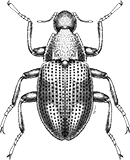
Coleoptera
“Adult Beetles”

Coleoptera
“Larval Beetles”

Diptera
“True Flies”

Ephemeroptera
“Mayflies”
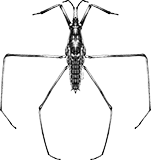
Hemiptera
“True Bugs”

Lepidoptera
“Aquatic Caterpillars, Snout Moths”

Megaloptera
“Alderflies, Dobsonflies, and Fishflies”
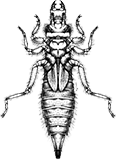
Odonata
“Dragonflies and Damselflies”
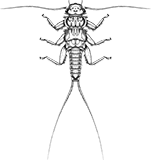
Plecoptera
“Stoneflies”
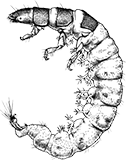
Trichoptera
“Caddisflies”
family
Polycentropodidae
genus
Neureclipsis
“Trumpet-net, Tube Maker Caddisflies”
Genus Overview
6 species in North America. The retreat of Neureclipsis is a very distinct trumpet shape. The larvae live in running slow waters usually among woody debris.
Characteristics
POLLUTION TOLERANCE
Southeast: 4.4
Upper Midwest: 7
Midwest: 2.7
Mid-Atlantic: 7
0 = least tolerant, 10 = most tolerant
FEEDING HABITS
Collector / Filterer
Engulfer / Predator
Shredder / Herbivore
Engulfer / Predator
Shredder / Herbivore
MOVEMENT
Clinger
DISTRIBUTION
Widespread (east of the Rocky Mtns.)
HABITAT
Lotic-erosional
Diagnostic Characters
order
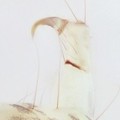
Prolegs With Single Hook
family
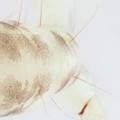
Abdominal Segment IX Membranous
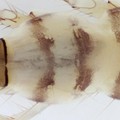
Membranous Mesonotum
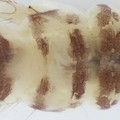
Membranous Metanotum
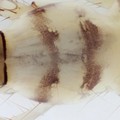
Mesonotum with 3 Pairs of Setae
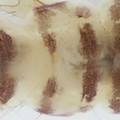
Metanotum with 3 Pairs of Setae
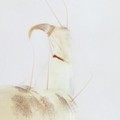
Long, Free Anal Prolegs
genus
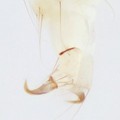
Small Spines On Anal Claw
+ Expanded Character List
Order:
Larvae: Wings/wing pads absent. Eye spots present, but compound eyes absent. Antennae usually small, inconspicuous. Three pairs of segmented legs present on thorax. Pair of anal prolegs, each with single hook, located on last abdominal segment. Larvae can be free-living, in silken retreats attached to substrate, or in usually-portable tubes or cases made of sand, rocks, or plant material.
Family:
The larva lives in a silken net that is funnel-shaped, tubular, flattened, or like a spider web; the top of the first thoracic segment is covered by sclerites, but the tops of the second and third thoracic segments are membranous; at the front of the base of each front leg is a foretrochantin that is pointed apically (not hatchet-shaped); the tarsi of all legs are more or less cylindrical, not flattened; tibiae are at least as long as the tarsi; anal prolegs are long and freely moveable.
Genus:
short basal segment of anal claw, small spines on anal claw

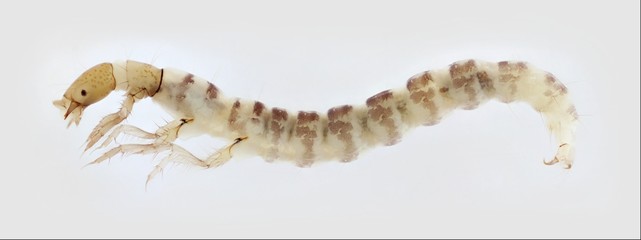
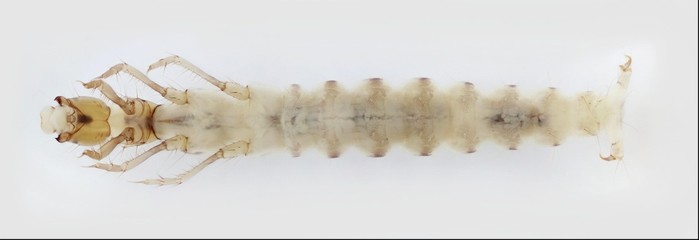
Dorsal
Lateral
Ventral



